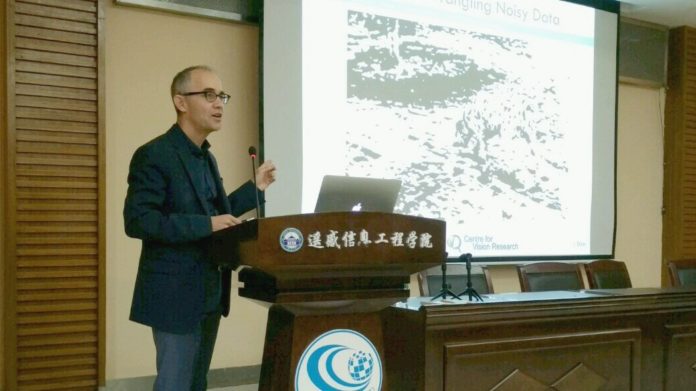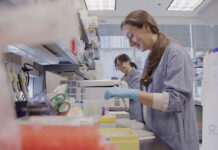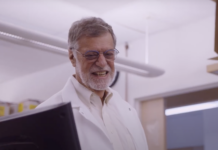James Elder is a Professor at the Departments of Electrical Engineering and Computer Science and Psychology at York University. He is learning about the complexities of human vision in hopes of teaching computers to “see” and interpret video more like we do using artificial intelligence (AI). We asked everything from what he gets up to outside work to his advice for young researchers in hopes of giving you a better understanding of what goes on outside the lab for one of the best minds in Canadian research.
What do you like most about being a researcher?
I love the combination of creativity and rigour. Computer vision and AI research is inherently a constructive, creative process. Visual neuroscience research is also a highly creative search for ingenious experiments and unifying theory that can integrate diverse observations.
However, if it were not for the rigour imposed by the rules of logic – the scientific method and principles of engineering – our creative souls would become untethered. These are the guide-ropes that save us from the abyss, helping us to distinguish the crazy good ideas from the crazy bad ones.
What advice would you give young researchers?
Research can be a long journey. To sustain yourself, you must follow your passion and take pleasure in every day’s small achievements. It’s important to develop strong opinions but also to question constantly your own convictions as well as those of others.
What inspired you to become a researcher?
When I was a teenager, I became fascinated by the brain. What an incredible machine! Could we build one? And what on earth was the mind and why was it there?
Then working in industry after my undergraduate training in engineering I realized that while I liked to build things I was still drawn by the wonders of the natural world and the process of discovery. This convinced me to go to graduate school and to combine my engineering background with training in AI and visual neuroscience.
What do you like to do for fun?
I love skiing, running, squash and tennis, and I’ve recently taken up surfing. My daughter is already better than me, but I am determined to give her a run for her money.
I love to cook – there is again a combination of creativity and discipline, but with physical and sensuous qualities. Cooking for family and friends is always rewarding.
I also like woodwork and carpentry, for the same reasons.
What’s your favourite cuisine?
I’m less attracted to overly fussy, Michelin star cuisine. To me, it’s always about the quality and freshness of the ingredients. My ideal is a simple meal (tagliolini con tartufo, wild boar pasta, or Fiorentina) with great local wine on a warm evening on a piazza in the Tuscan countryside.
If you could do any profession other than your own what would it be?
It’s really hard to beat being an engineer and scientist!
I enjoy writing, and I’m fascinated by world affairs, so I could see myself as a journalist or historian. Also, I really enjoy working with my students and colleagues, and this makes me think that creative ensemble work in theatre or film would be very rewarding.
If you could meet any historical figure, who would it be and why?
I am already planning a small dinner party on our Tuscan piazza. Leonardo da Vinci, Lord Byron, Charles Dickens, and Joseph Conrad are invited. All larger than life, creative souls who lived through interesting times. I’m sure some stories will be told.








































